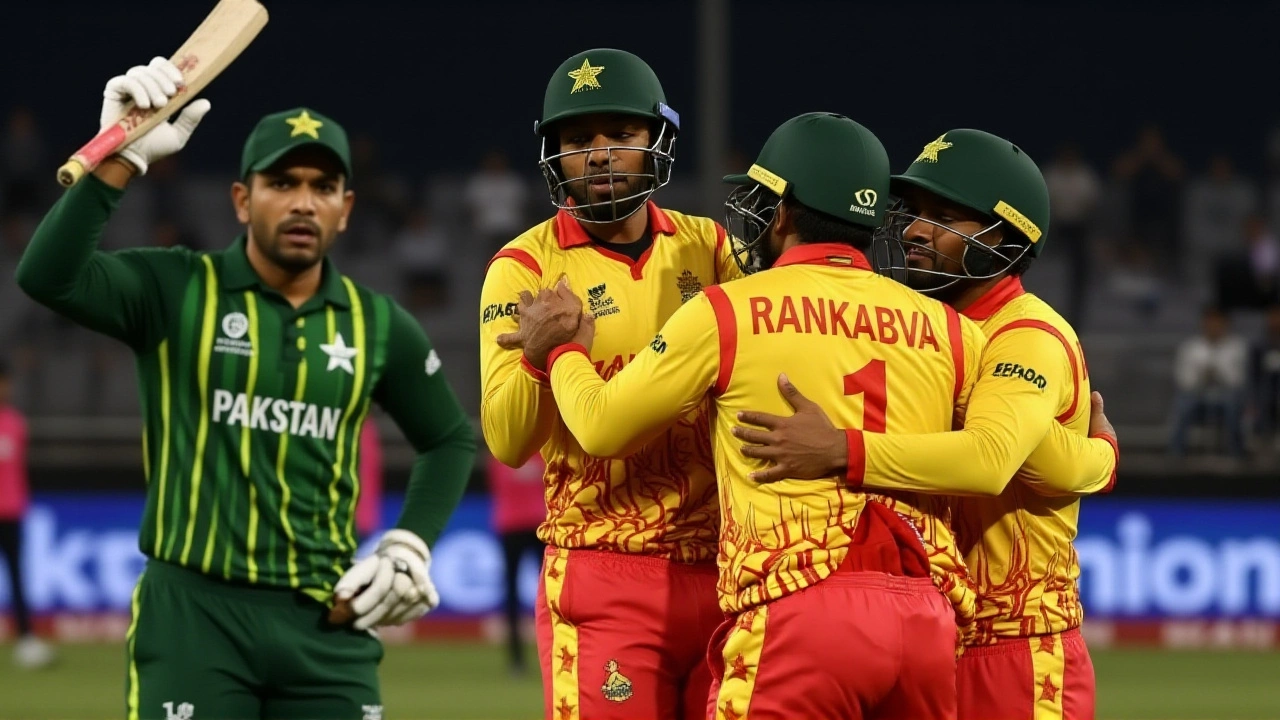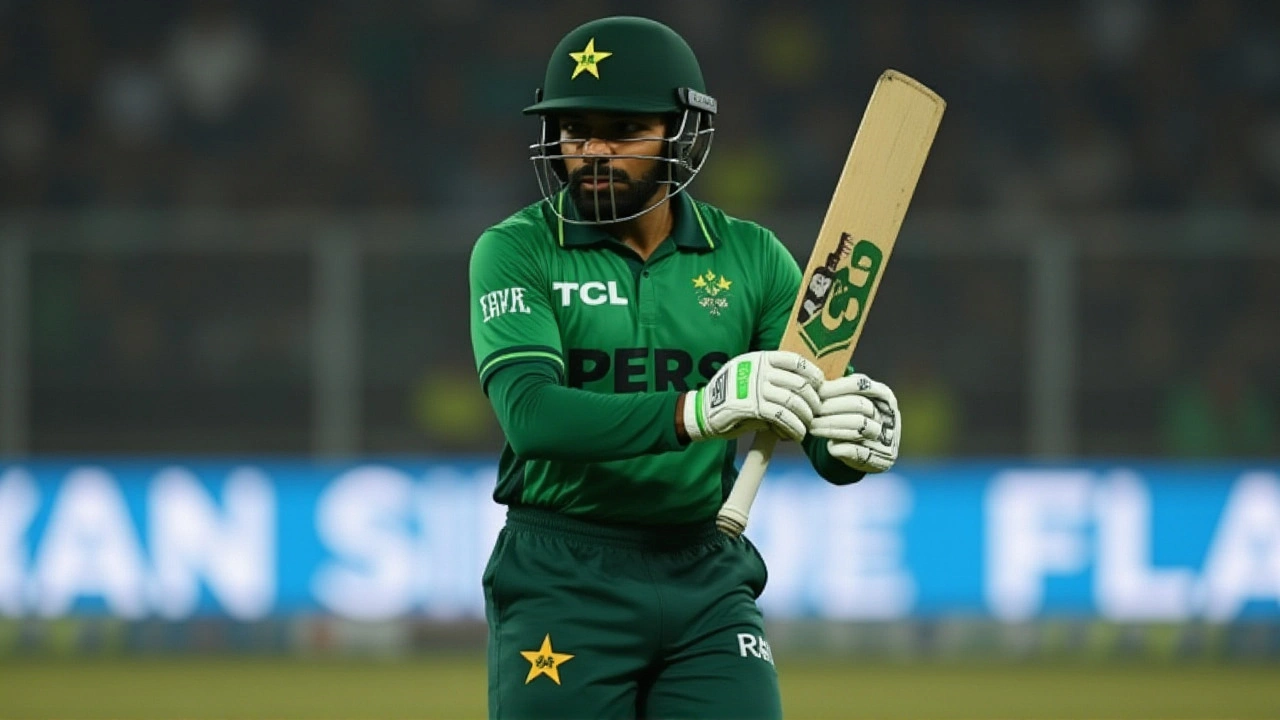
On a crisp November night in Rawalpindi, Pakistan didn’t just win a cricket match—they sent a statement to the world. Their 69-run thrashing of Zimbabwe on the 4th T20I of the 2025 Pakistan T20I Tri-Nation SeriesRawalpindi Cricket Stadium wasn’t just about runs and wickets. It was their fifth straight T20I victory, and more importantly, it booked their ticket to the final. The crowd, buzzing with the kind of energy only a home crowd can generate, knew they were witnessing something bigger than a warm-up tournament. This was preparation for the 2026 Men's T20 World Cup, and Pakistan is rolling at full throttle.
Powerhouse Batting Lays the Foundation
After winning the toss, Pakistan captain Salman Ali Agha made the bold call to bat first—and it paid off in spades. The openers gave a steady start, but it was the middle order that turned the game. Babar Azam, cool as ever, carved out 74 off just 52 balls, blending elegance with aggression. His partnership of 63 with Sahibzada Farhan anchored the innings when Zimbabwe’s spinners threatened to strangle the run flow. Fakhar Zaman added a fiery 44 from 32, reminding everyone why he’s still one of the most explosive openers in the game. The final five overs exploded for 69 runs—T20 cricket at its most brutal. Pakistan finished at 195/5, a total that looked insurmountable on paper—and even more so on the pitch.Zimbabwe’s Fight, and the Usman Tariq Show
Zimbabwe didn’t roll over. Not even close. Ryan Burl, their gritty all-rounder, played the innings of his life: 67 not out off 49 balls, with five sixes and six fours. He kept Zimbabwe alive, even when the scoreboard screamed surrender. But the moment the game truly slipped away was when Usman Tariq walked into the attack. In his four overs, he delivered one of the most devastating spells in recent T20I history: 4 for 18, including a hat-trick. The crowd went silent after the first wicket, then erupted after the third. He dismissed Brad Evans, Sikandar Raza, and Tinashe Panyangara in consecutive balls—no other bowler in the series has achieved that. Zimbabwe collapsed from 78/3 to 104/8. The final score: 126 all out in 19 overs. A 69-run margin. The difference wasn’t luck. It was execution.
Behind the Scenes: Afghanistan’s Withdrawal and Zimbabwe’s Replacement
This tournament almost looked very different. On October 17, 2025, the Afghanistan Cricket Board pulled out, citing escalating cross-border tensions with Pakistan. The move sent ripples through the cricket world. Would the series survive? Could Pakistan host it safely? The Pakistan Cricket Board acted swiftly. Within 72 hours, they confirmed Zimbabwe as the replacement, with Sri Lanka staying on. The decision wasn’t just logistical—it was political. By sticking to the schedule, Pakistan signaled that cricket, for now, remains above geopolitics. And the fans? They showed up. The stadium was packed, every seat filled with flags and chants. This was a statement of resilience.Key Players and Milestones
Beyond the result, the series has been a stage for milestones. Sikandar Raza reached his 100th T20I wicket—a rare feat for a non-Test nation player. Meanwhile, Sri Lanka’s Eshan Malinga made his T20I debut, hinting at a new generation rising. For Pakistan, the bowling attack is clicking: Naseem Shah and Mohammad Nawaz have been consistent, while Usman Khan has quietly become a reliable finisher. Zimbabwe, despite the loss, showed heart. Their decision to replace Kramer with Masakadza paid off in the field, even if the bat let them down.
What’s Next? The Final and the Road to 2026
The final is set for November 29, 2025, at the same venue. Pakistan will face either Sri Lanka or Zimbabwe—whoever finishes second. If Zimbabwe scrapes through, they’ll be playing for pride and redemption. If Sri Lanka advances, it’s a classic clash: Pakistan’s momentum versus Sri Lanka’s experience. Either way, this series has been a vital tune-up. With the 2026 Men's T20 World Cup looming, every match matters. Pakistan’s batting depth, their death-over specialists, and their fearless fielding are all firing. The message is clear: they’re not just participating in 2026—they’re aiming to win it.Frequently Asked Questions
How did Usman Tariq’s hat-trick impact the match outcome?
Usman Tariq’s hat-trick in the 15th over shattered Zimbabwe’s momentum when they were still in with a chance at 78/3. His three wickets in three balls—Brad Evans, Sikandar Raza, and Tinashe Panyangara—triggered a collapse from 78/3 to 104/8. His figures of 4/18 were the best in the series, and his ability to bowl yorkers under pressure turned what could’ve been a close finish into a 69-run rout.
Why did Afghanistan withdraw from the tri-series?
The Afghanistan Cricket Board cited ongoing cross-border tensions between Afghanistan and Pakistan as the reason for their withdrawal on October 17, 2025. While no official statement detailed the nature of the tensions, regional diplomatic strains have affected sports exchanges before. The PCB responded by inviting Zimbabwe, a team with strong T20 credentials, to maintain the tournament’s competitive integrity.
What does Pakistan’s five-match winning streak mean for the 2026 T20 World Cup?
Pakistan’s five straight T20I wins—including three in this series—show they’ve solved their middle-order instability and death-bowling issues. Babar Azam’s consistency, Usman Tariq’s wicket-taking ability, and the emergence of young players like Naseem Shah suggest a balanced, confident unit. Historically, teams peaking in the months before the World Cup tend to go deep. Pakistan is trending in that direction.
How has Zimbabwe performed in recent T20Is against Pakistan?
Zimbabwe has struggled against Pakistan in recent years, losing all five bilateral T20Is since 2021, including a 61/0 to 57 defeat in 2024. Their only win came in the 2022 T20 World Cup, a one-run thriller. This 69-run loss in Rawalpindi extends their winless streak against Pakistan to six matches. Despite Ryan Burl’s heroics, their bowling attack remains inconsistent under pressure.
Who are the key players to watch in the final?
For Pakistan, Babar Azam’s form and Usman Tariq’s death bowling are critical. If Sri Lanka reaches the final, keep an eye on Eshan Malinga’s spin and Wanindu Hasaranga’s all-round threat. For Zimbabwe, Ryan Burl will need another match-winning knock, and their opening pair must survive the powerplay. The final will likely be decided by who handles the 16th to 20th overs better.
Is this series a sign that Pakistan can host major tournaments despite political tensions?
Absolutely. Despite Afghanistan’s withdrawal, the PCB ensured the series went ahead with zero disruptions. Over 80,000 fans attended the four matches across three venues. International teams praised the security, facilities, and crowd support. This proves Pakistan remains a viable host for global cricket—even amid regional instability. The 2026 T20 World Cup could very well see matches in Lahore or Karachi again.
 Cricket
Cricket